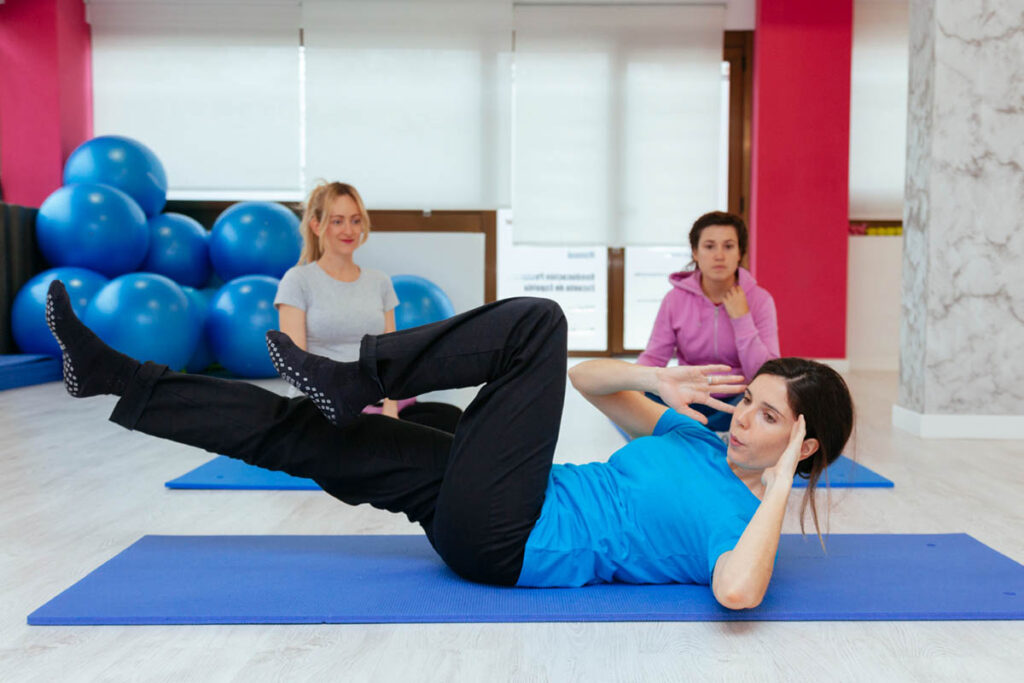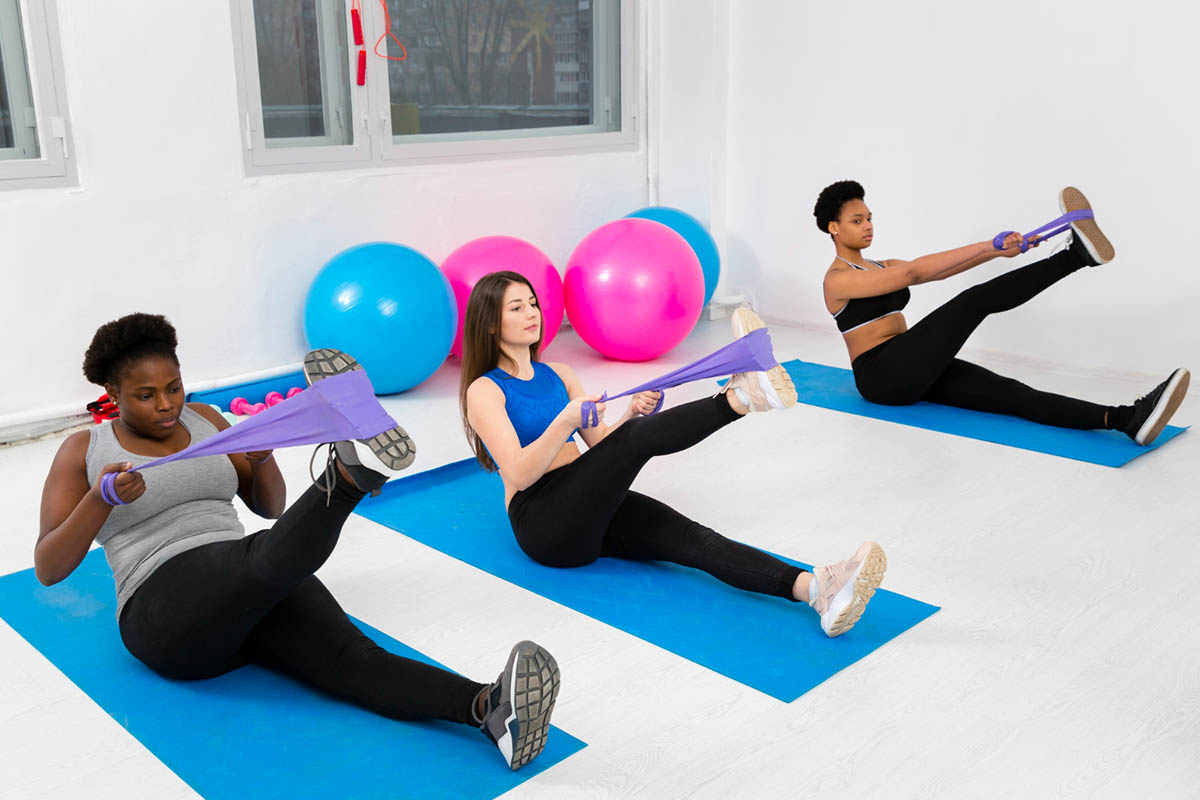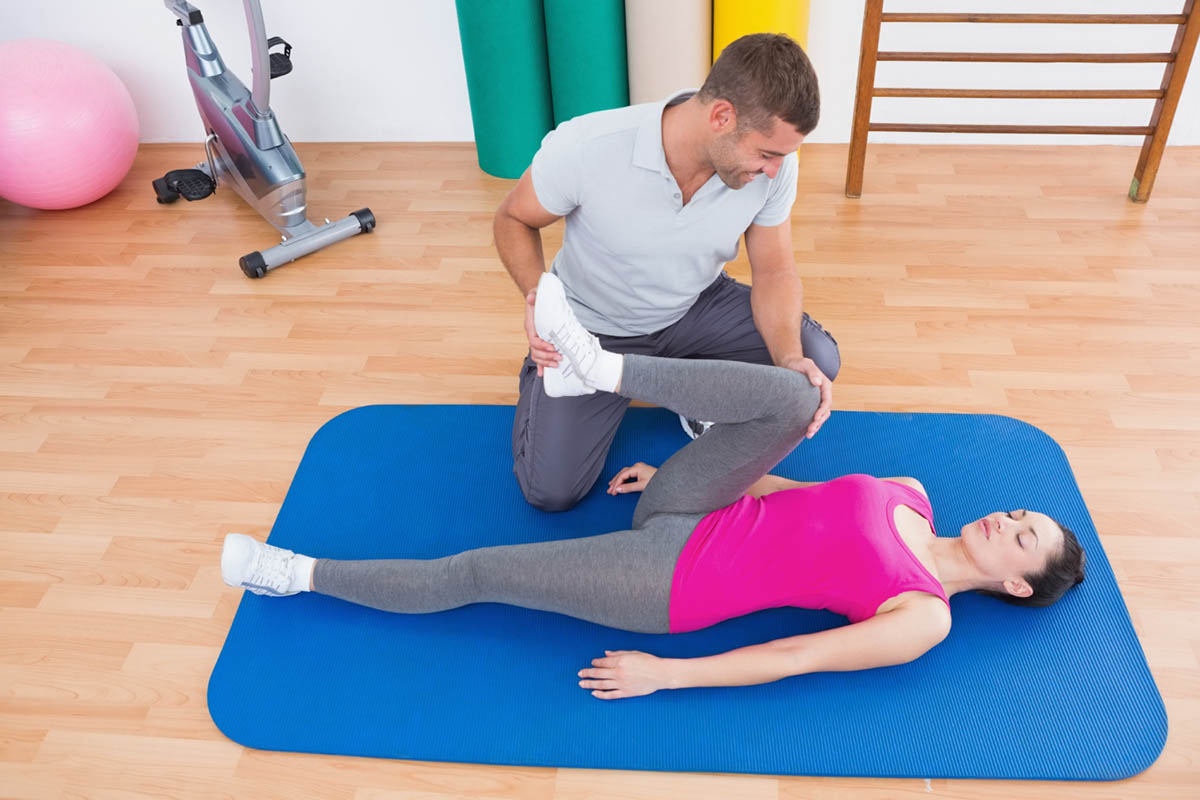
The pelvic floor is a group of muscles and tissues located at the base of your pelvis. These muscles play a crucial role in supporting the bladder, bowel, and, for women, the uterus. Maintaining a strong and healthy pelvic floor is essential for overall well-being and can prevent a variety of health issues, including pelvic organ prolapse. Physical therapy exercises for the pelvic floor, also known as pelvic floor muscle training, are a safe and effective approach to improving pelvic floor health for everyone, regardless of age or gender. At Up And Running PT, we specialize in providing comprehensive pelvic floor therapy to help you achieve optimal health and quality of life.
Common Issues and Symptoms of Pelvic Floor Dysfunction
Pelvic floor dysfunction can lead to a variety of symptoms, including urinary incontinence, bowel issues, pelvic pain, and sexual dysfunction. These problems are more common than many people realize. Studies indicate that around 40% of women experience at least one pelvic floor disorder, 17% have two disorders, approximately 6% have three problems, and around 2% have four. The prevalence of these disorders highlights the importance of pelvic floor physical therapy. Addressing these issues can significantly improve bowel control and overall quality of life.
Pelvic Floor Physical Therapy Exercises You Can Try

Kegel Exercises
Kegel exercises, developed in the late 1940s by Dr. Arnold H. Kegel, are designed to strengthen the pelvic floor muscles. These exercises are particularly effective in preventing urinary incontinence and are beneficial for both men and women. Kegel exercises are commonly used and have a 30% to 90% success rate in women with stress incontinence. If you’re wondering how to do pelvic floor muscle training, Kegel exercises are an excellent starting point.
Step-by-Step Guide
- Identify the Right Muscles: To find your pelvic floor muscles, try stopping urination midstream. These are the muscles you’ll be working.
- Contract and Hold: Tighten your pelvic floor muscles and hold the contraction for 3 to 5 seconds.
- Relax: Release the muscles and rest for a few seconds.
- Repeat: Aim for 10-15 repetitions three times a day. This exercise can be done in a comfortable position, such as a seated position or standing position.
Bridge
The bridge position exercises not only the pelvic floor muscles but also the glutes and lower back.
Step-by-Step Guide
- Lie Down: Start by lying on your back with your knees bent and feet flat on the floor, hip-width apart.
- Lift Your Hips: Slowly raise your hips towards the ceiling, squeezing your pelvic floor muscles as you lift.
- Hold: Hold the position for a few seconds, then slowly lower your hips back down.
- Repeat: Perform 10-15 repetitions. This exercise helps improve pelvic floor strength and core stability.
Seated Abdominal Bracing
This exercise focuses on engaging the pelvic floor muscles and abdominal muscles simultaneously.
Step-by-Step Guide
- Sit Comfortably: Sit on a chair with your feet flat on the floor.
- Engage Your Core: Tighten your abdominal muscles as if you’re preparing for a punch.
- Contract Your Pelvic Floor: Simultaneously squeeze your pelvic floor muscles.
- Hold and Release: Hold the contraction for a few seconds, then relax. Repeat 10-15 times. This exercise helps in improving bowel control and reducing urine leakage.
Pelvic Tilts
Pelvic tilts are excellent for improving the flexibility and strength of your pelvic floor muscles.
Step-by-Step Guide
- Lie Down: Lie on your back with your knees bent and feet flat on the floor.
- Tilt Your Pelvis: Flatten your lower back against the floor by tilting your pelvis up.
- Hold: Hold the position for a few seconds, then release.
- Repeat: Perform 10-15 repetitions. This exercise can be part of your daily exercise regimen.
Squats
Squats are effective in strengthening the pelvic floor muscles along with the lower body muscles.
Step-by-Step Guide
- Stand with Feet Apart: Stand with your feet shoulder-width apart.
- Lower Your Body: Slowly bend your knees and lower your body as if you’re sitting in a chair.
- Squeeze Your Pelvic Floor: As you lower down, squeeze your pelvic floor muscles.
- Return to Start: Push through your heels to return to the starting position. Repeat 10-15 times. This exercise also enhances core muscles and overall body strength.
Internal Hip Rotation
This exercise helps in improving the flexibility and strength of the pelvic floor muscles.
Step-by-Step Guide
- Lie Down: Lie on your back with your knees bent and feet flat on the floor.
- Rotate Your Hips: Slowly drop one knee towards the floor while keeping the other knee bent.
- Engage Your Pelvic Floor: As you rotate, engage your pelvic floor muscles.
- Return to Start: Bring your knee back to the starting position and repeat on the other side. Perform 10-15 repetitions on each side. This exercise helps improve pelvic floor muscle contractility and mobility.
Enhancing Your Pelvic Floor and Core Strength
Incorporating these exercises into your daily routine can significantly enhance your pelvic floor muscle strength and core stability. Regular practice can lead to noticeable improvements in bladder control, bowel function, sexual satisfaction, pelvic pain relief, and overall core stability and posture. For those looking to perform pelvic floor physical therapy at home, these exercises are simple and effective. Remember to integrate them into your daily activities for the best results.
Benefits of Pelvic Floor Physical Therapy Exercises
Improved Bladder Control (Reduced Incontinence)
Pelvic floor exercises can significantly reduce or even eliminate urinary incontinence, providing better bladder control and preventing urinary tract infections.
Enhanced Bowel Function (Better Stool Control)
Strengthening the pelvic floor muscles can improve bowel function and help in managing issues like constipation or fecal incontinence.
Increased Sexual Satisfaction
A strong pelvic floor can enhance sexual health and satisfaction by improving muscle tone and control.
Reduced Pelvic Pain
Regular pelvic floor exercises can alleviate abdominal pain associated with conditions like endometriosis or interstitial cystitis.
Improved Core Stability and Posture
A strong pelvic floor contributes to better core stability and posture, reducing the risk of lower back pain and improving overall body mechanics.
Common Mistakes to Avoid in Pelvic Floor Physical Therapy Exercises

Holding Your Breath
Avoid holding your breath during exercises. Breathe normally to ensure proper muscle engagement and prevent pelvic floor dysfunction.
Contracting Other Muscles
Focus on isolating your pelvic floor muscles without contracting your abdomen, thighs, or buttocks.
A Full Bladder
Perform these exercises with an empty bladder to prevent discomfort and ensure better muscle engagement. Avoid overdoing the exercises to prevent muscle strain.
Overdoing
Gradually increase the intensity of your exercises. Overdoing can lead to muscle tightness or strain.
Pain is a Red Flag
If you experience pain during any exercise, stop immediately and consult a health professional.
Find Relief from Pelvic Pain with Up and Running Physical Therapy
At Up and Running Physical Therapy, we specialize in providing tailored pelvic floor therapy Fort Collins to address your specific needs. Our team of experienced pelvic floor therapists is dedicated to helping you achieve optimal pelvic health and overall well-being through personalized care, electrical stimulation, and biofeedback training.
Conclusion
Pelvic floor physical therapy exercises are a simple yet effective way to improve pelvic health. Incorporate these exercises into your daily routine to experience their numerous benefits. Remember, consistency is vital to achieving the best results. Whether you’re addressing pelvic floor issues like urinary incontinence, erectile dysfunction, or chronic pain, regular practice can make a significant difference in your quality of life. If symptoms persist, seek medical advice.
FAQs
How can I do pelvic floor therapy at home?
You can perform pelvic floor exercises at home by following the step-by-step guides provided above. Ensure you have a quiet and comfortable position to focus on your exercises.
How do I know if I need pelvic floor therapy?
If you experience symptoms like urinary incontinence, bowel issues, pelvic pain, or sexual dysfunction, you may benefit from pelvic floor therapy. Consult a healthcare provider for a proper diagnosis and to ensure you receive appropriate medical care.
Can I do pelvic floor therapy myself?
Yes, you can perform pelvic floor therapy exercises on your own. However, consulting with a pelvic floor therapist for personalized guidance can be highly beneficial, especially if you have severe symptoms. Biofeedback exercises and relaxation techniques can also be helpful when supervised by a professional.

